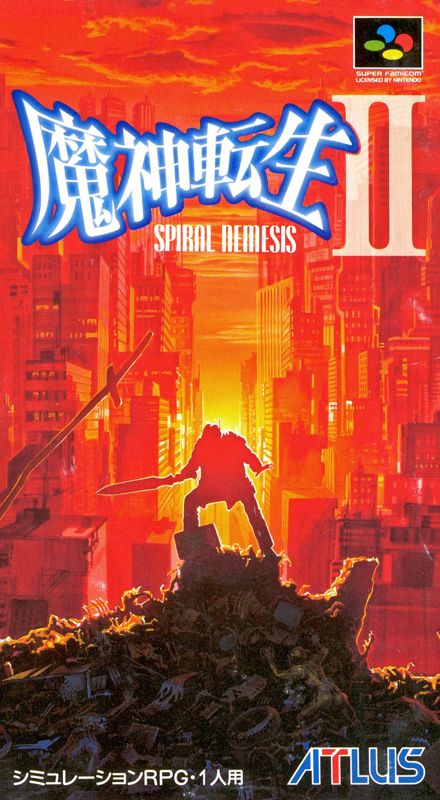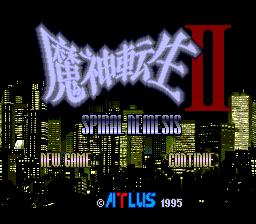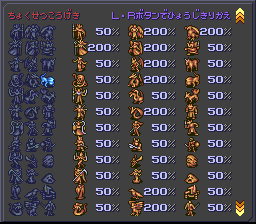Retro Replay Review
Gameplay
Majin Tensei II: Spiral Nemesis leans heavily into strategic, turn‐based combat, placing you in command of three specialized agents tasked with repelling a demonic incursion on an alternate‐reality Tokyo circa 1996. Each mission unfolds on a grid‐based battlefield, where movement ranges, attack patterns, and environmental obstacles demand careful planning. Capturing enemy bases, exterminating demon forces, and fulfilling specific objectives all rely on your ability to coordinate your team’s strengths—whether that means flanking foes, securing choke points, or deploying support skills at critical moments.
(HEY YOU!! We hope you enjoy! We try not to run ads. So basically, this is a very expensive hobby running this site. Please consider joining us for updates, forums, and more. Network w/ us to make some cash or friends while retro gaming, and you can win some free retro games for posting. Okay, carry on 👍)
When two units clash, the game transitions into a concise auto‐battle sequence that showcases attack animations, skill effects, and damage calculations. While this system speeds up routine skirmishes, seasoned players may find the repetition of these bite‐sized encounters a bit formulaic over the campaign’s length. Nevertheless, the auto‐battle interludes serve as a welcome break from grid‐tactics and keep the pace brisk, allowing you to focus on the broader strategic picture rather than micromanaging every action.
True to the Megami Tensei lineage, Spiral Nemesis integrates demon classification and the iconic alignment axes—Light versus Dark and Law versus Chaos—into its core mechanics. Captured demons can be deployed as allies, each bringing unique resistances, elemental affinities, and special abilities that can turn the tide of battle. Experimenting with demon fusion and alignment‐based skill inheritance injects a layer of long‐term planning, encouraging you to assemble a team that balances raw power, elemental coverage, and strategic utility.
Graphics
For a mid‐’90s release, Spiral Nemesis delivers surprisingly detailed pixel art and atmospheric map design. The top‐down view of Tokyo’s streets, rooftops, and underground ruins evokes a brooding urban landscape on the brink of otherworldly collapse. Though limited by the hardware of its era, the game’s environments convey a strong sense of place, with moody color palettes that shift from neon cityscapes to shadowy demon lairs.
Character and demon sprites are meticulously crafted, with each foe displaying distinctive silhouettes and attack animations during auto‐battles. The fluidity of combat sequences may not match modern standards, but the dramatic poses and elemental effects—be it a crackling Thunder spell or a hellish flame breath—still feel impressive. Subtle touches, like the flickering glow of cursed wards or the dynamic changes in lighting when a mission objective is triggered, elevate the visual presentation beyond pure nostalgia.
Menus and HUD elements in Spiral Nemesis maintain a clean, minimalist design, emphasizing clarity over flash. Demonic rosters, skill lists, and status screens are laid out logically, reducing downtime when preparing for battle. While the user interface may appear dated to newcomers, its straightforward structure ensures that tactical decisions take center stage without unnecessary visual clutter.
Story
After the events of the original Majin Tensei, Spiral Nemesis thrusts players into an alternate 1996 Tokyo besieged by demons from another reality. You assume the roles of three special agents—each with their own mysterious past—who must sever the rift fueling the invasion. The narrative unfolds in a mostly linear fashion, with mission briefings and character interludes guiding you from one objective to the next without detours or side‐quests.
Dialogue is functional and occasionally cryptic, paying homage to the Megaten tradition of moral ambiguity and philosophical undertones. Though character development takes a backseat to tactical engagements, small revelations about each agent’s beliefs and loyalties punctuate the campaign at pivotal moments. The interplay between Light/Dark and Law/Chaos alignments emerges as more than a gameplay mechanic, hinting at deeper questions of free will and the nature of good versus evil.
While Spiral Nemesis does not strive for epic plot twists or sprawling worldbuilding, its concise storytelling keeps the focus squarely on the tactical struggle. Fans seeking a tightly woven narrative may yearn for more character depth, but those who appreciate a lean, mission‐driven plot will find the pace invigorating. The game’s climax brings together strategic showdowns and thematic resonance, underscoring the weight of your alignment choices on the fate of Tokyo and beyond.
Overall Experience
Majin Tensei II: Spiral Nemesis offers a distinctive blend of strategy RPG depth and classic Megaten flair. Its linear mission structure may feel restrictive to players who crave open‐world exploration, but the game’s focused design ensures a steady progression of challenges that test both tactical foresight and party composition. The integration of demon fusion, alignment axes, and auto‐battle sequences creates a unique rhythm between macro planning and micro‐scale encounters.
Though the graphics and UI reflect the limitations of mid‐’90s hardware, the game’s atmospheric presentation and well‐crafted sprites continue to charm. The soundtrack’s eerie motifs and battle themes complement the tense, urban‐fantasy setting, heightening the sense of urgency as the demonic threat intensifies. Even repeated playthroughs benefit from alignment‐based branching in demon recruitment, offering replayability for those eager to explore Law, Chaos, and Neutral paths.
In sum, Spiral Nemesis stands as a niche but rewarding chapter in the Megami Tensei saga. It excels at delivering tight, cerebral strategy encounters while weaving in the series’ hallmark themes of alignment and demonology. Potential buyers who love tactical depth, demon‐fusion mechanics, and moody urban fantasy should find much to admire, whereas those longing for expansive exploration or deep character arcs may need to adjust expectations before embarking on this spiral descent into nemesis territory.
 Retro Replay Retro Replay gaming reviews, news, emulation, geek stuff and more!
Retro Replay Retro Replay gaming reviews, news, emulation, geek stuff and more!









Reviews
There are no reviews yet.